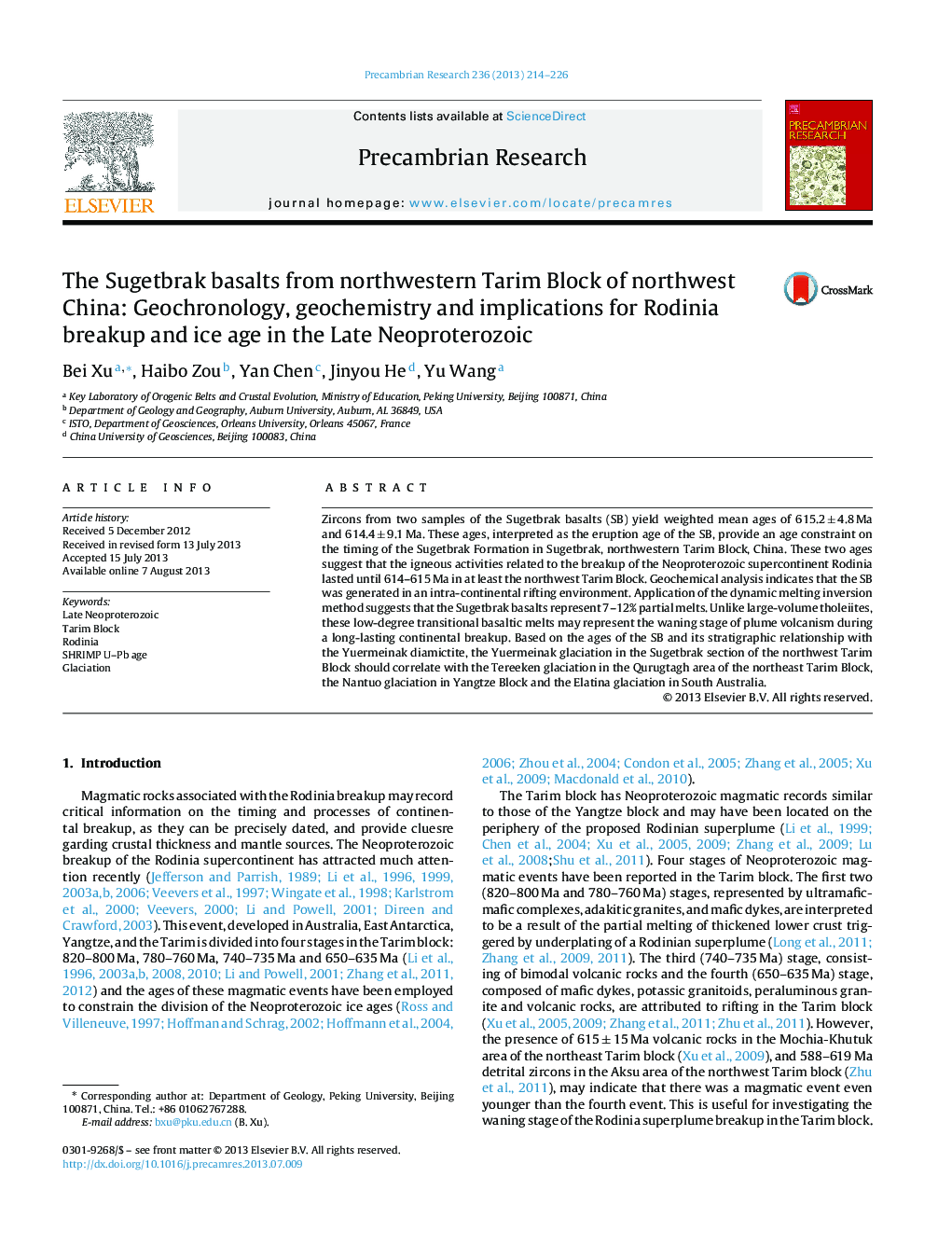| Article ID | Journal | Published Year | Pages | File Type |
|---|---|---|---|---|
| 4723175 | Precambrian Research | 2013 | 13 Pages |
•Basalts of the Sugetbrak Formation yield two ages of 615.2 ± 4.8 Ma and 614.4 ± 9.1 Ma.•Tarim may have involved in the breakup of Rodinia at its late stage.•The Sugetbrak basalts represent low-degree meltsproduced in a rifting environment.•The new ages put a constraint on the timing of the Yuermeinak glaciation in Tarim.•We correlate the Yuermeinak glaciation with other glaciations around the world.
Zircons from two samples of the Sugetbrak basalts (SB) yield weighted mean ages of 615.2 ± 4.8 Ma and 614.4 ± 9.1 Ma. These ages, interpreted as the eruption age of the SB, provide an age constraint on the timing of the Sugetbrak Formation in Sugetbrak, northwestern Tarim Block, China. These two ages suggest that the igneous activities related to the breakup of the Neoproterozoic supercontinent Rodinia lasted until 614–615 Ma in at least the northwest Tarim Block. Geochemical analysis indicates that the SB was generated in an intra-continental rifting environment. Application of the dynamic melting inversion method suggests that the Sugetbrak basalts represent 7–12% partial melts. Unlike large-volume tholeiites, these low-degree transitional basaltic melts may represent the waning stage of plume volcanism during a long-lasting continental breakup. Based on the ages of the SB and its stratigraphic relationship with the Yuermeinak diamictite, the Yuermeinak glaciation in the Sugetbrak section of the northwest Tarim Block should correlate with the Tereeken glaciation in the Qurugtagh area of the northeast Tarim Block, the Nantuo glaciation in Yangtze Block and the Elatina glaciation in South Australia.
